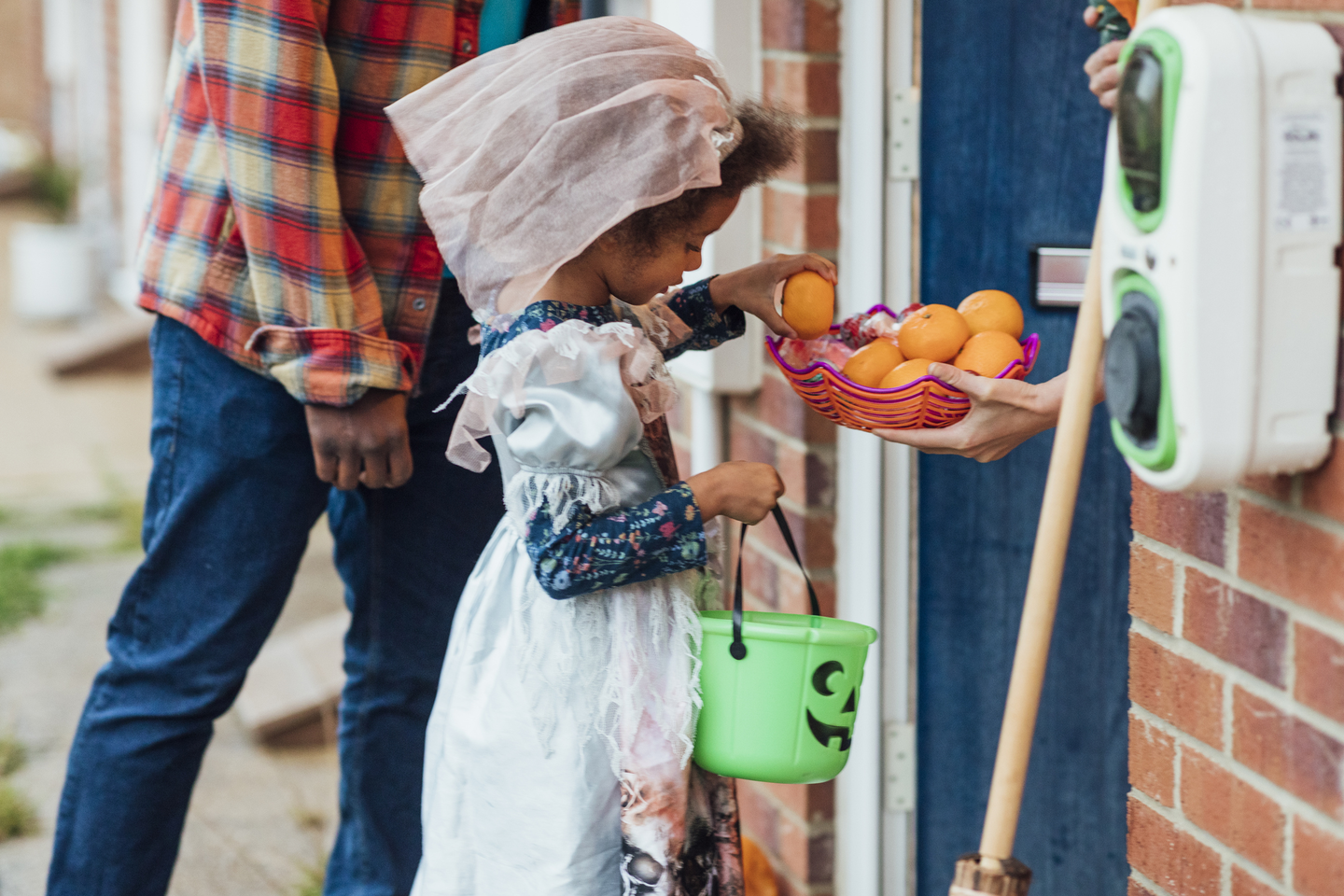How to be green this Halloween
What’s more frightening than ghosts, ghouls, and goblins? The amount of litter and waste that’s produced during Halloween celebrations each year.
This Spooktober, we’re asking Bayside to have a green Halloween – but what does that mean?
Halloween can be a great time to dress up, decorate, and eat tasty snacks. Unfortunately, it also causes a lot of waste and litter. We’ve compiled a list of simple tips on how to remain green, this Halloween:
Simple swaps

Low-cost costumes
Many Halloween costumes are fast fashion, made from poor-quality materials and are mass-produced each year, often only being worn once, for a couple of hours. The most sustainable costume is one you already own. Have a look in your wardrobe or check with your family and friends if they’ve got something you can borrow.
Alternatively, you make it yourself, rent it, or shop second-hand for your costume instead of buying it brand new. There are many great places where you can source materials and costumes, including local op shops, Facebook Marketplace, Buy/Sell/Swap groups, and Gumtree. This will save you money and help the planet.
Sustainable snacks
Halloween lollies and chocolate often come from all over the world and are wrapped in a lot of plastic, but there are a couple of easy ways to reduce this:
- If you’re having a Halloween party, make your own sweet treats – there are many recipes available online, including spooky decorated cookies, cupcakes, and more.
- If choosing to purchase your snacks, try to buy them in bulk to avoid the amount of plastic that comes with many of these products.
- Buy local if you can or give preference to Australian brands.
Low-waste decorations
Unfortunately, decorations are both wasteful and problematic for the environment as many are put up outdoors and can interfere with biodiversity or end up blowing away in our drains. Take fake cobwebs for example - bees, butterflies, small birds, lizards, and even small possums can get entangled and trapped in this material and are unable to break free. Other examples include small plastic bugs and spiders, fake bats, and more washing into our drains.
The good news is, this can be avoided as there are heaps of great low-waste decorations, including:
- Check out second-hand decoration options at our local op shops, Facebook Marketplace, Buy/Sell/Swap groups, and Gumtree.
- Make them yourself from materials around the house. There are many articles online with instructions, but some ideas include using cardboard to make a skeleton or tombstone, creating ghosts out of old sheets, and repurposing your toilet paper rolls to make scary bats.
- If you do decide to buy decorations, try to buy them locally and ensure they’re reusable and made from quality materials. That way, you can use them again and again.
- Be sure to responsibly recycle or dispose of your decorations if they are single-use. You can check what goes in what bin by visiting our A-Z Waste and Recycling Directory, a comprehensive list of what items go where.
Happy Green Halloween, Bayside 💚🎃

